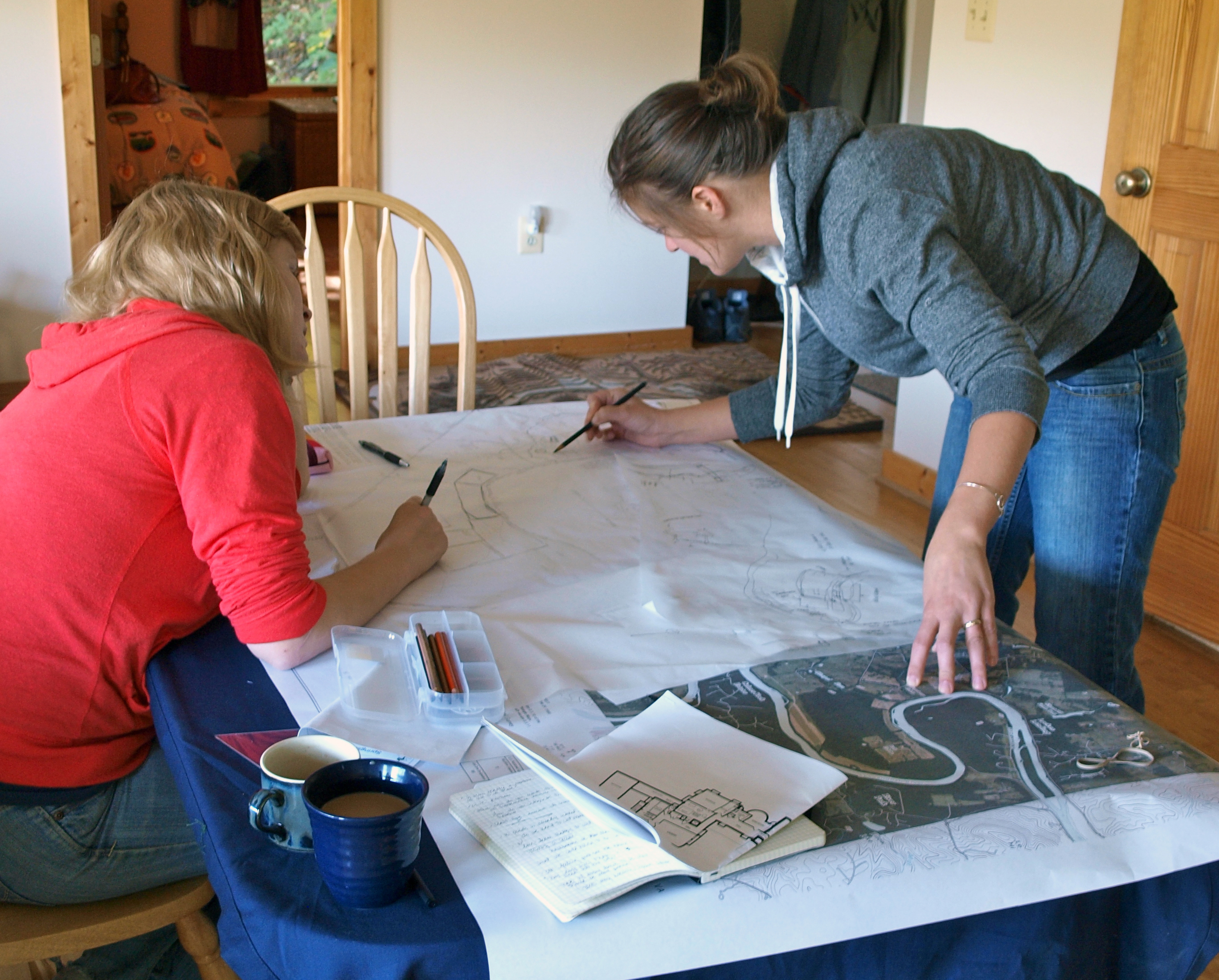Team of faculty and students advances to final round in Casey Trees Foundation competition

A team comprising faculty and students from three different colleges at Virginia Tech has advanced to the final round in a master plan design competition sponsored by the Casey Trees Foundation.
Out of 14 teams from across the country, Virginia Tech’s team is among four that have made it to the final round. They completed a mid-competition presentation at the Casey Trees headquarters in Washington D.C., Feb. 25, and are now preparing for the final in-person presentation in late May. The competition winner will be announced June 23.
The Casey Trees Foundation is a Washington D.C.-based nonprofit organization, established in 2002, that is committed to restoring, enhancing and protecting the tree canopy of the nation’s capital. To support this effort, the organization maintains the Casey Tree Farm, located on 730 acres of forests and fields bordered by the Shenandoah River in Clarke County, Va.
The goal of the Casey Trees Master Plan Design Competition and Awards Program, open to cross-disciplinary teams of faculty and students in colleges and universities, is to develop a plan for the Casey Tree Farm that reflects best practices, introduces innovative land conservation concepts, and helps expand the Casey Trees Foundation’s mission to, “restore, enhance, and protect the tree canopy of the Nation’s Capital.”
The master plan must also reflect and reinforce the mission of the Casey Tree Farm, “to enhance the mission of Casey Trees through research, collaboration and environmental stewardship.”
The team includes faculty from Virginia Tech’s locations in Blacksburg and Alexandria, Va.,:
- John Fike, an associate professor in the Department of Crop and Soil Environmental Sciences in the College of Agriculture and Life Sciences;
- Nathan Heavers, an assistant professor of landscape architecture in the School of Architecture + Design in the College of Architecture and Urban Studies;
- Paul Kelsch, an associate professor of landscape architecture at the College of Architecture and Urban Studies’ Washington Alexandria Architecture Center;
- John Munsell, an associate professor and forest management extension specialist in the Department of Forest Resources and Environmental Conservation in the College of Natural Resources and Environment;
- Susan Piedmont-Palladino, a professor of architecture at the College of Architecture and Urban Studies’ Washington Alexandria Architecture Center; and
- Eric Wiseman, an associate professor of urban forestry and arboriculture in the Department of Forest Resources and Environmental Conservation in the College of Natural Resources and Environment.
The team also includes five graduate students:
- Taylor Chakurda of Pittsburgh, a master’s student in the Department of Forest Resources and Environmental Conservation in the College of Natural Resources and Environment
- Laura Cohen of Topton, Pa., master’s of landscape architecture student at the Washington Alexandria Architecture Center in the College of Architecture and Urban Studies;
- Amanda Foran of Auburn, Al., a master’s of landscape architecture student at the Washington Alexandria Architecture Center in the College of Architecture and Urban Studies
- Sarah Richter of New Providence, N.J., a master’s student in architecture at the Washington Alexandria Architecture Center in the College of Architecture and Urban Studies; and
- Andrea Swiatocha of Washington, D.C., a master’s student in architecture at the Washington Alexandria Architecture Center in the College of Architecture and Urban Studies.
The competition has been an unusual opportunity to combine the strengths and expertise of faculty experts and students from different disciplines that complement one another, which in itself has been a rewarding part of the experience for team members.
John Fike, who is focusing on the agroforestry aspects of the plan, said, “It’s been fun to impart some of the ways I look at the landscape and land use and get that same feedback from them relative to their own disciplines and to hear them engage in the enterprise in a different language.”
As landscape architect Kelsch said, “At first we were a little trepidatious since we didn’t all know each other, but fortunately we all just get along really well. Even though we have different vocabularies and different ways of thinking, the personalities have meshed — it’s just very synergistic.”
The expertise and creativity from each team member will be woven into a robust master plan proposal.
“Our proposal will challenge traditional boundaries — physical, cultural, disciplinary, and ecological — to facilitate real and virtual engagement between city dwellers and trees, fostering increased community stewardship, education, and cultivation to make Casey Tree Farm and the city of Washington, D.C., greener, healthier, and more equitable,” Kelsch said.
Much of the team’s focus is on figuring out what it’s going to take to produce and supply trees to Washington, D.C., and developing plans that will meet the Casey Tree Foundation’s production needs in ways that are sustainable – both environmentally and economically.
Among the numerous recommendations are new ways of integrating trees with different types of agricultural production systems and innovative methods of growing and harvesting trees. The team is also investigating ways to best utilize the existing resources and structures, including the 17,000-square-foot main house and 20,000 square feet of stables.
The master plan concepts developed through this competition will inform the future design and management of the Casey Tree Farm, a challenge which the team is taking very seriously, proposing solutions not only for the immediate needs of the farm, but also for its continued growth and success.
Dedicated to its motto, Ut Prosim (That I May Serve), Virginia Tech takes a hands-on, engaging approach to education, preparing scholars to be leaders in their fields and communities. As the commonwealth’s most comprehensive university and its leading research institution, Virginia Tech offers 240 undergraduate and graduate degree programs to more than 31,000 students and manages a research portfolio of $513 million. The university fulfills its land-grant mission of transforming knowledge to practice through technological leadership and by fueling economic growth and job creation locally, regionally, and across Virginia.








